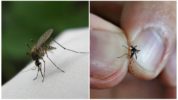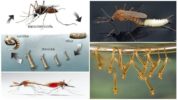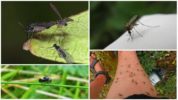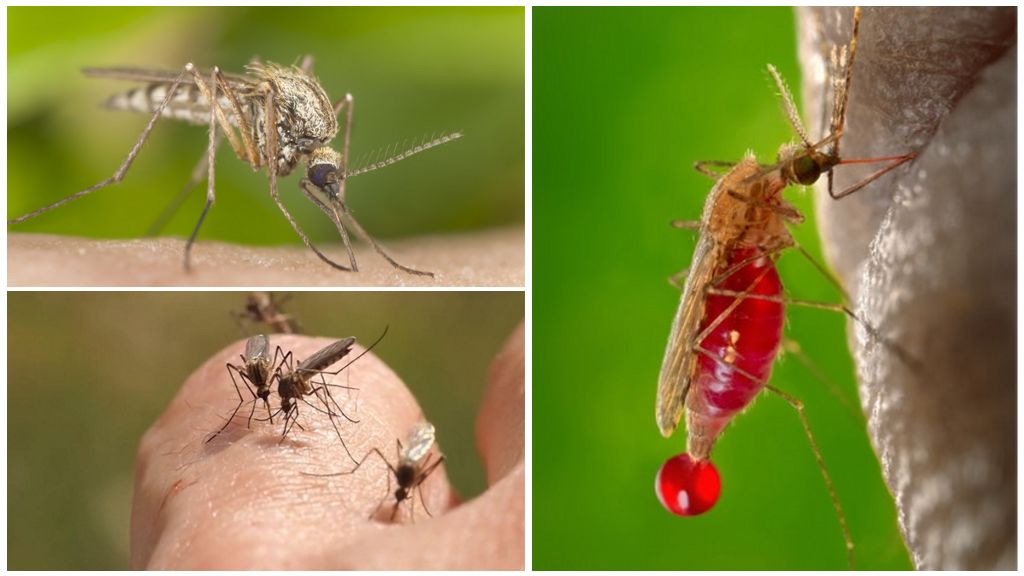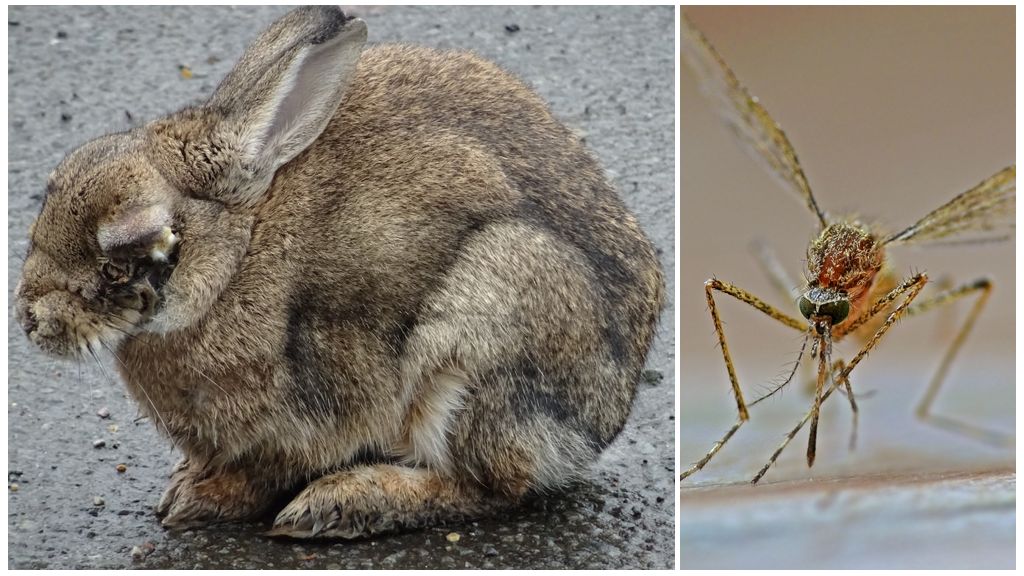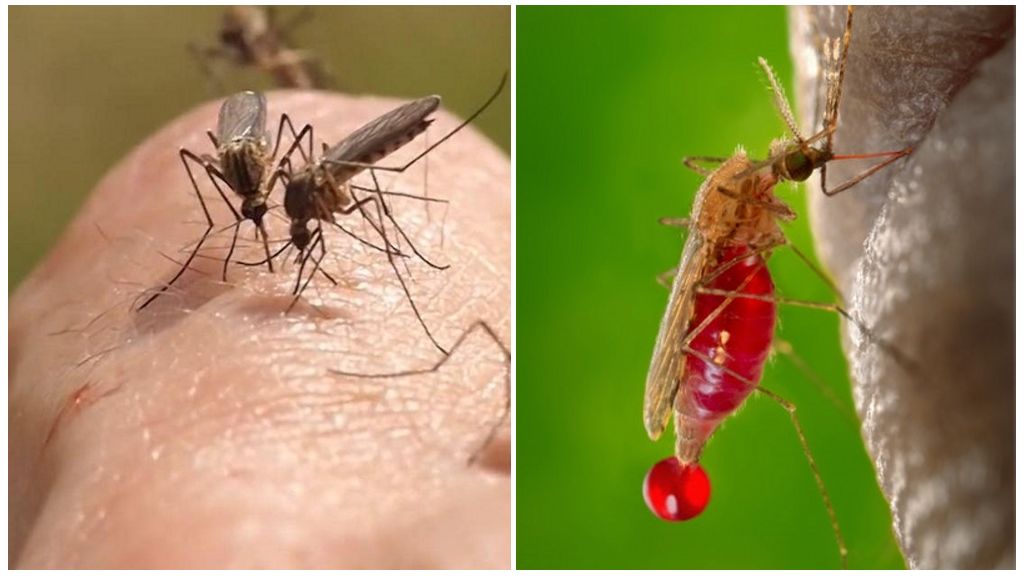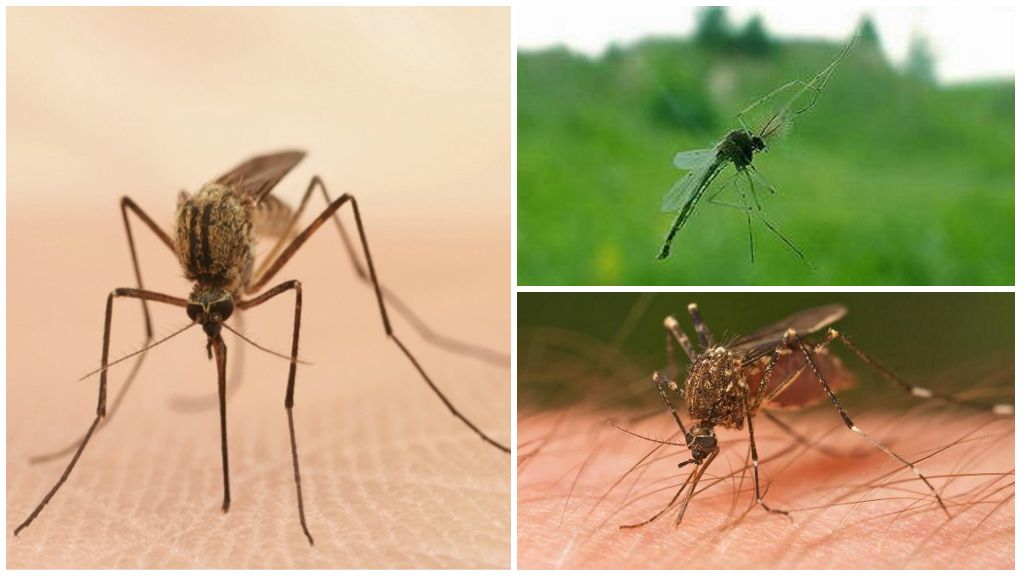- Mosquito
- Mosquito breeding
- Cats and mosquitoes
Mosquitoes are spread all over the planet, with the exception of the coldest places: the Arctic Circle and Antarctica. In total there are about 3000 species of these blood-sucking insects, among which about 100 live in Russia. Almost every person at least once became a victim of a bloodsucker, but not everyone knows how many mosquitoes live, and what their life span depends on.
Mosquito life span
Mosquitoes prefer to live near bodies of water with stagnant water, in shady forests, lowlands, and marshy areas. This choice of habitat for life is explained by the fact that the development of insect larvae occurs in water. One of the most common species is the common mosquito. It is he who bothers people to a greater extent. Also common green bellsbut people are not of interest to him.
The main period of insect life occurs in the summer. The life span of a mosquito depends on a number of conditions:
- Ambient temperature has a great influence on the development and life of insects. The most optimal range is from +10 to + 15 ° C. Under such conditions, the female lives for about 3-4 months. At a temperature of about +20 degrees, her life span in the absence of other harmful factors will be 2 months. If the temperature exceeds 25 ° above zero, the female will live no more than 40 days. The male in similar modes lives 2 times less than the female.
- Where mosquitoes live, humidity plays an important role in creating favorable conditions for their development. Therefore, insects so often choose wet cellars, cool utility rooms, pantries as their home. This is where you need to look for their clusters, trying to figure out where do mosquitoes come from.
- The availability of food is an important aspect for maintaining the life of insects. Mosquito menu Depends on gender. Male individuals feed on plant foods - nectar and plant sap. Females need a constant source of blood. It can be a person, animal, amphibian and even fish.
- Natural enemies that eat mosquitoeshave a direct impact on the life cycle of insects. They are birds, other insects, insectivorous animals. Man also helps reduce the life of bloodsuckers.
Under ideal conditions, a female mosquito can live a whole year, surviving winter time in a state of numbness. How many ordinary mosquitoes live in real conditions is easy to count. Usually, the female’s life lasts no more than 40 days, and the males die in 20 days.
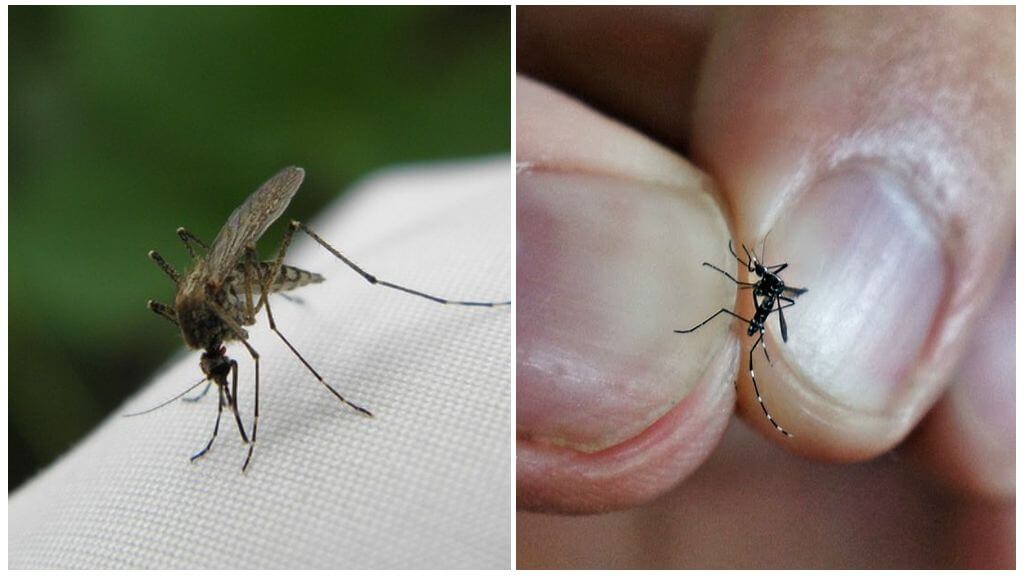
On a note!
One of the myths about mosquitoes is the limited life span of a female after her bite. The only factor affecting how long a mosquito lives after a person bites is the person himself. If he spots an insect on his skin in time and kills him, this will be the last bite in his life for this female. Otherwise, the female will continue to search for a victim for another bite.
Hibernation
Mosquitoes die at temperatures below zero degrees. Those individuals who were able to survive before the onset of cold weather begin to seek shelter for hibernation. In nature, such a place is fallen leaves, cracks in the hollows of trees.But often mosquitoes choose vegetable stores, utility buildings and even human houses in order to survive the winter period.
Interesting!
In the apartment, they can hide between window frames, on a glazed balcony or loggia, in the vestibule in front of the front door, in the bathroom. Disputes what floor mosquitoes fly toare ongoing. With the onset of heat, the female and the larvae wintering in the water warm up and can continue to exist.
Reproduction and developmental stages of insects
Male mosquitoes are not able to bite a person, their main role is to mate with the female. To maintain strength, they feed on flower nectar. For several days the males mate, on this their life cycle has been exhausted and soon they will disappear. Insects breed in the warm season, but not in the hottest months.
Why do mosquitoes drink bloodThere is a simple explanation. After fertilization to female mosquitoes, biological fluid is necessary for the formation of offspring. If they fail to find a source of blood, mosquito eggs still mature. During bloodsucking, the insect absorbs nutritious protein-rich blood. How many times a mosquito bitesdepends on the degree of saturation. The amount of blood absorbed directly affects how many eggs an individual lays. A mosquito female can bite up to 8 times a day. She herself determines how much blood she needs to receive. After each digestion of blood, a certain number of eggs are formed in it.
Interesting!
If females have not found a suitable prey, they live without blood and form fewer offspring. The mosquito's life span is shortened, and almost immediately after breeding, the female is forced to die.
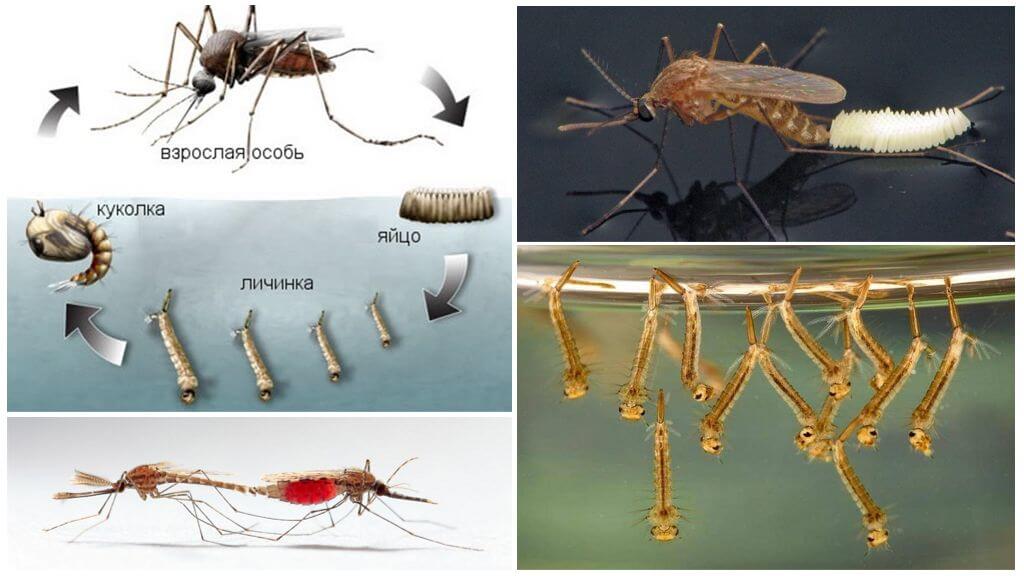
Every 2-3 days, a female mosquito lays eggs by shaking them in a pond or ordinary puddle. At one time she is able to lay from 20 to 200 eggs. How mosquitoes are born can be observed independently. The insect flies randomly over the water surface to spread eggs throughout the pond.
Once in the water, eggs in the form of elongated sticks remain on the algae. The birth of a mosquito begins in stages:
- The egg has a small bubble filled with air, which does not allow it to sink to the bottom of the reservoir. After 3-7 days, a larva emerges from it.
- The larva externally resembles a small worm, which with the help of brushes in its mouth is able to filter up to a liter of water per day in search of food. Mosquito larvae can eat small pieces of algae, microorganisms, bacteria. For breathing, a young individual should expose the lower edge of its abdomen on the surface of the water, where the simplified respiratory organ is located. The larval period lasts 2-3 weeks, then it molts and pupates.
- Pupa is a cross between a worm and an adult. A curved body in the form of a comma looks like a tadpole. A mosquito pupa is not able to feed; it keeps near the surface of the water to breathe. After a few days, limbs and wings appear, and a mosquito takes off from the water surface.
On a note!
How mosquitoes breed and how many days their developmental stages take depends on their species. In tropical countries, the entire insect transformation cycle lasts no more than a week. In our country, the formation of a squeak mosquito takes 30-40 days.
Differences between midges and mosquitoes
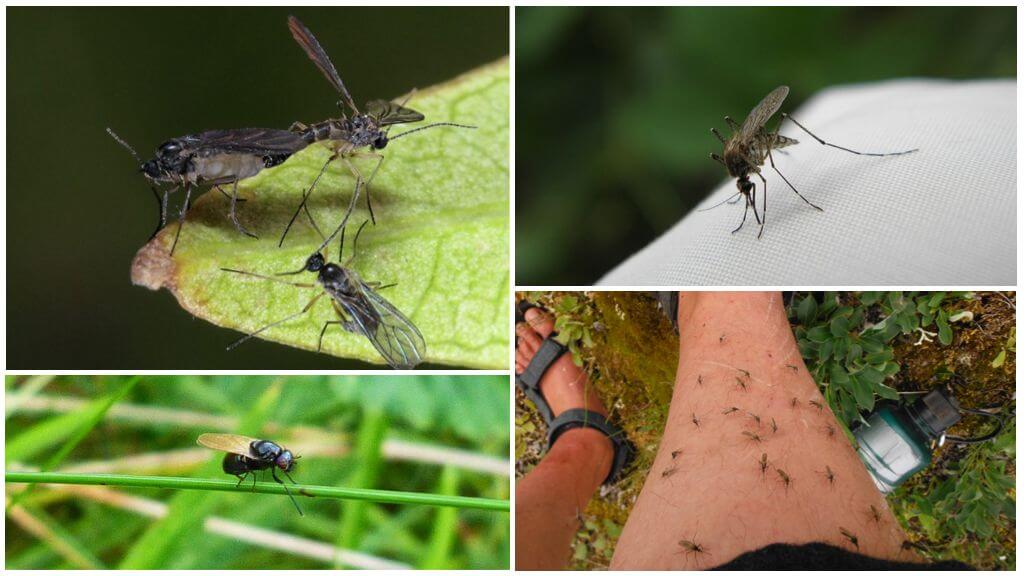
Cats, like mosquitoes, prefer to live near ponds where they lay their eggs. But unlike mosquito females, the midge is capable of laying thousands of eggs for its short life of 1 month. Such fertility makes midges worthy rival for scribblers.
To form offspring, midges need blood, which they receive as a result of biting the skin and licking the blood released from the wound. Cats are not carriers of diseases and do not lay eggs in humans under the skin, as some do species of flies. But the pain of bites and spoiled outdoor recreation made them enemies for people.
After breeding, midges tend to disappear, since their main purpose in life is fulfilled. And eggs laid in a river or stream independently form into an adult.
Mosquito season
Blood-sucking squeaks breed all summer, but their greatest number falls on August. This month, daylight hours are shorter, and before the sun sets, mosquitoes appear. August in central Russia is characterized by cool evenings and high humidity. And these are the optimal conditions for midges and mosquitoes.
The mosquito season in the suburbs usually begins in the second half of summer. During the day, insects live without food, hiding from the heat in forests and parks, and in the evening go hunting and annoy their bites and squeak. Escape from mosquito invasion will help protective equipment. It’s hard to say exactly in which month mosquitoes disappear. It depends on the weather. Usually in September their number decreases markedly, and after the first frosts they disappear.
